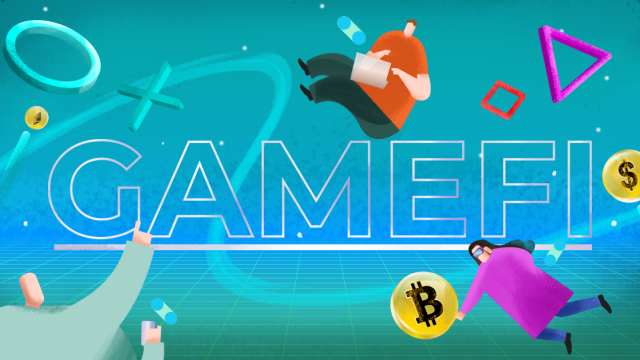Axie Infinity, the gaming platform known for its play-to-earn scheme, started in 2018. However, it was not until 2021 when Axie Infinity began to reap rewards from an increase in transaction volumes, recording US$364.4 million in market fees and in-game purchases.
That would not last. The unicorn had 2.7 million active users at the end of 2021. In March 2022, just 4 months later, it reportedly suffered a 45% decrease, highlighting the volatility of the industry.
What is GameFi?
GameFi itself first became a term when A. Cronje, a software developer, tweeted it in 2020. It's short for Game and Financial, referring to games that incorporate financial components supported by blockchain technology.
Essentially, GameFi works by allowing players to earn real financial rewards, laid out in the game’s native token, for completing in-game tasks. The native token is generated from a smart contract. Notable elements within the GameFi ecosystem include Non-Fungible Tokens (NFTs), cryptocurrencies, and in-game assets like avatars, weapons and costumes.
GameFi works by linking decentralised finance (DeFi) with blockchain gaming, appealing to the masses by allowing it to be traded in the real world such as NFT marketplaces, making it a real money maker. Players can also own and trade virtual land in games like The Sandbox or Decentraland. This allows players to utilise their in-game assets to earn more by renting out virtual land parcels.
The most popular GameFi platforms right now would run on Ethereum and use NFTs for their core functions. Players will earn tokens by performing a variety of traditional in-game tasks such as playing, building and defeating other players. Since GameFi has a decentralised business model, the asset ownership gained from playing the games is entirely the players’. This is a sharp contrast to the old pay-to-play approach, in which every earned reward belongs to the gaming company after initial investment by the players. In GameFi, the earnings are up to the players, with no initial investments required.
Decentralised economy in the metaverse
The main appeal of the GameFi sector lies in its promise of a decentralised economy. Anyone is allowed to join and play to increase income. Of course, such a future is offered by metaverse, a virtual reality universe. In the metaverse, these virtual assets hold tangible values.
For the financial sector, GameFi promises that customers will be the centre and ordinary folks are buying into this idea - 1 in 3 Filipinos indicated in a survey that they would quit jobs to dabble in GameFi. It’s not hard to imagine why when you can trade in-game currencies earned in games like Axie for real-life products and services.
We’ve seen traditional banking embracing digital banks as a way to reach and serve underbanked and unbanked people. With digital assets, customers can define the rules in the financial network.
DeFi will make self-building financial networks possible with automated verifications without human interference. With DeFi, lower cost and high return on investments are accessible with complete transparency.
GameFi is one of many ways more people can access digital currency, and thus, spur innovations within blockchain payments. Its conversion-free and instantaneous nature supports money remittance in virtual marketplaces - in July 2021, Axie players remitted USD33 million back to the Philippines.
As a literal extension of the current iteration of digital payments, web-based platforms can harness the power of DeFi and blockchain payments offered by companies like Ripple. This allows them to circumvent the limitations imposed by traditional institutions and supercharge their GameFi offerings.
What the future holds
A report by Footprint Analytics stated that in Q1 2022, 20% to 30% of tokens listed on centralised exchanges were GameFi project tokens. GameFi accounted for 16.4%, or USD3.7 billion, of the total investment in the blockchain industry.
While it can be hard to anticipate the trajectory of an industry built entirely on a more volatile market - reports suggest fresh approaches are needed to revitalise GameFi - the increasing exploration of stablecoins as an alternative might be able to stabilise the industry.







